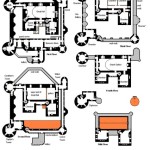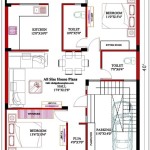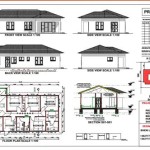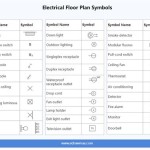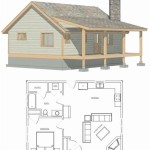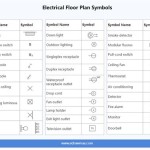Understanding the State Opera House Wellington Seating Plan
The State Opera House in Wellington, New Zealand, stands as a prominent venue for a wide array of performing arts, including opera, ballet, musical theatre, and concerts. Understanding the seating plan is crucial for patrons to make informed decisions about ticket purchases, ensuring an optimal viewing and auditory experience. This article provides a detailed exploration of the State Opera House’s seating arrangement, covering its various sections, key considerations for selecting seats, and advice for maximizing enjoyment of performances.
The State Opera House boasts a traditional proscenium arch theatre layout, designed to accommodate a diverse range of productions. The auditorium is divided into several distinct seating sections, each offering a unique perspective of the stage. These typically include the stalls (or orchestra), dress circle, grand circle, and upper circle (or balcony). The specific configuration and naming conventions may vary slightly depending on the event and the ticketing platform used.
Each section provides a different balance of proximity to the stage, viewing angle, and price point. The stalls, being closest to the stage, generally offer the most intimate and immersive experience, but can sometimes be subject to obstructed views depending on the specific seat location and the production's staging. The circles, elevated above the stalls, offer a broader, more panoramic view of the stage, often at a slightly reduced price. Careful consideration of individual preferences and priorities is therefore essential when choosing seats.
Key Seating Sections and Their Characteristics
A comprehensive understanding of the individual seating sections is paramount when selecting tickets. Each area possesses advantages and disadvantages that cater to different preferences regarding proximity, view, and budget.
The Stalls (Orchestra): This section is located on the ground floor, directly in front of the stage. Seats in the stalls offer the closest proximity to the performers, enhancing the sense of intimacy and immersion. Patrons in this section can observe nuanced facial expressions and intricate details of costumes and stagecraft. However, the stalls are also the most expensive section, and seats located towards the extreme sides or rear of the stalls might offer a somewhat restricted view. Furthermore, being close to the stage can sometimes result in a less balanced sound experience, especially for performances involving a large orchestra or amplified sound. It is important to diligently review seating maps and reviews before making a booking in the stalls.
The Dress Circle: Situated above the stalls, the dress circle provides an elevated view of the stage. This section often offers a good balance between proximity and viewing angle. The dress circle typically commands a sightline that encompasses the entire stage, allowing patrons to appreciate the overall staging, choreography, and set design. Sound quality in the dress circle is also generally considered to be excellent. Ticket prices in the dress circle tend to be slightly lower than in the stalls, making it an attractive option for those seeking a premium experience at a more moderate cost. However, depending on the specific configuration of the theatre, seats in the rear rows of the dress circle may feel somewhat distant from the stage.
The Grand Circle: Positioned above the dress circle, the grand circle offers a still higher vantage point of the stage. From here, the entire stage is visible, providing a comprehensive overview of the performance. While the grand circle may be further from the stage than the stalls or dress circle, it can offer a more balanced and less obstructed view, particularly for large-scale productions. Ticket prices in the grand circle are typically lower than in the stalls and dress circle, making it a more budget-friendly option. However, it's important to note that individuals with a fear of heights might find the upper levels less appealing. The sound quality in the grand circle can be very good, but can also be slightly affected by the distance from the stage depending on the acoustics of the venue itself.
The Upper Circle (Balcony): Located at the highest level of the theatre, the upper circle, also known as the balcony, provides the most distant view of the stage. While the overall stage picture remains visible, details of individual performers and stagecraft may be less discernible. The upper circle generally offers the most affordable ticket prices, making it an accessible option for patrons on a budget. Despite the distance, the upper circle can still provide an enjoyable experience, especially for productions that emphasize visual spectacle and dynamic ensemble performances. The sound quality in the upper circle can be variable, depending on the acoustics of the theatre and the specific seating location. Some seats may also have restricted views due to safety railings or architectural features. Careful consideration of the seating chart and seeking reviews from other patrons is crucial before selecting seats in the upper circle.
Factors Influencing Seat Selection
Beyond the general characteristics of each seating section, several other factors should be taken into account when selecting seats. These factors can significantly impact the overall viewing and auditory experience.
Sightlines: Ensure that the selected seats offer a clear and unobstructed view of the stage. Check for potential sightline obstructions such as pillars, railings, or the heads of other patrons. Many ticketing platforms provide virtual seat views or detailed seating maps that indicate potential obstructions. Reviews from previous attendees can also offer valuable insights into the sightlines from specific seats.
Legroom: Adequate legroom is essential for comfort, especially during longer performances. Patrons who are taller or require more legroom should consider aisle seats or seats in sections with known legroom advantages. Some theatres provide legroom specifications on their website or ticketing platform.
Proximity to Amenities: Consider the proximity of the seats to essential amenities such as restrooms, exits, and concessions. Seats located closer to these amenities can be more convenient, especially for individuals with mobility issues or those who require frequent breaks.
Acoustics: While the State Opera House is designed to provide good acoustics throughout the auditorium, certain seating locations may offer a superior sound experience. Seats located closer to the center of the theatre are generally considered to provide the most balanced and immersive sound. Avoid seats directly under balconies or overhanging structures, as these may create sound shadows or echo effects. Reading reviews or consulting with theatre staff can provide valuable insights into the acoustic properties of different seating locations.
Personal Preferences: Ultimately, the best seats are those that align with individual preferences and priorities. Some patrons prioritize proximity to the stage and an intimate viewing experience, while others prefer a broader, more panoramic view. Some patrons are particularly sensitive to sound quality, while others prioritize legroom or proximity to amenities. Consider what aspects of the performance are most important and select seats accordingly.
Tips for Maximizing Your Experience
Once seats have been selected, several strategies can be employed to further enhance the overall viewing and auditory experience at the State Opera House.
Arrive Early: Arriving early allows ample time to find seats, settle in, and familiarize with the surroundings. This also minimizes the risk of missing the beginning of the performance due to unforeseen delays.
Read the Program: Reviewing the program provides valuable context and background information about the performance, enhancing comprehension and appreciation. The program often includes synopses, cast biographies, and insights into the creative process.
Minimize Disruptions: Refrain from talking, using electronic devices, or making unnecessary noise during the performance. This ensures that other patrons can fully enjoy the experience without distractions.
Dress Appropriately: While there is no strict dress code, it is generally considered appropriate to dress in smart casual attire. Avoid wearing overly casual clothing such as shorts, t-shirts, or athletic wear.
Respect the Performers: Show appreciation for the performers by applauding enthusiastically and refraining from making disruptive comments or behaviors. Standing ovations are typically reserved for exceptional performances.
By carefully considering the State Opera House Wellington seating plan, attending to individual preferences and priorities, and following these helpful tips, patrons can ensure a memorable and enjoyable experience at this iconic venue.

The Opera House Wellington Tickets 2025 Event Schedule Seating Chart

The Opera House Wellington Tickets 2025 Event Schedule Seating Chart
The Opera House Wellington Venues
The Opera House Wellington Venues

Opera House Wellington Wikiwand
The Opera House Wellington Venues
The Opera House Wellington Venues
The Opera House Wellington Venues

The Lyceum Theatre Wellington Street London

Royal Wanganui Opera House Venue Hire Events

